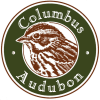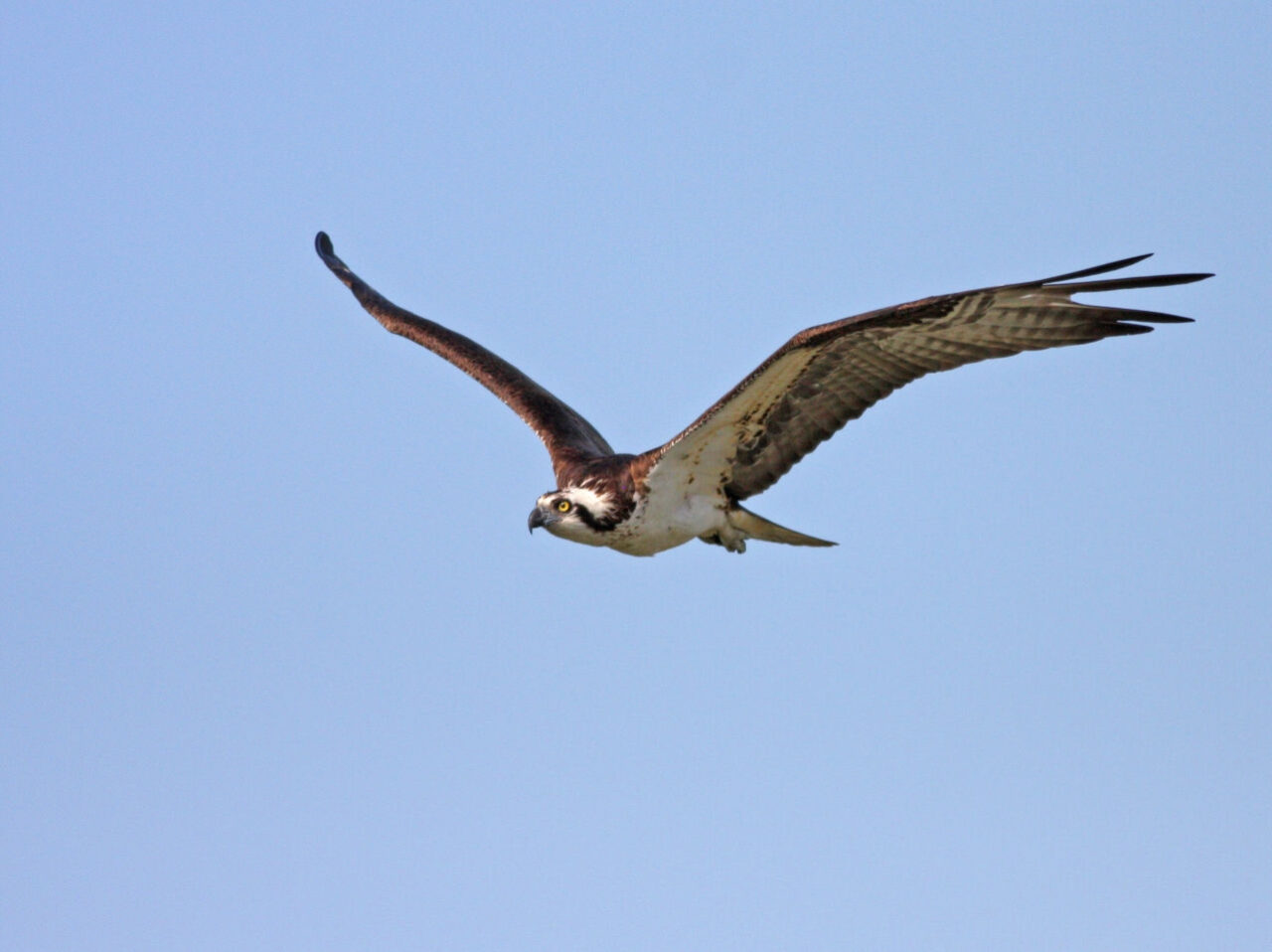Most of the veteran Ospreys are back from Brazil and other wintering spots in South America. After the Osprey team reestablished AC-1 at the northern end of Alum Creek Lake off of Hogback Road on March 13, a male Osprey started adding sticks the following day. However, while I visited the area during the following days, a Red-tailed Hawk seemed to be upset with the Ospreys. The lake level was at winter level of 885 feet above sea level, and the new platform stood above muddy sediment. Apparently, the red-tail discouraged the Osprey and the fish hawks shifted their attention to one of three platforms farther south that stand surrounded by lake water. Once the Army Corps of Engineers partially closed the gates at the Alum Creek dam during heavy rains at the end of March, the lake returned to a summer pool of 888 feet above sea level to encircle AC-1 with water. By this time, the Red-tailed Hawks were back at their nest where they fledged three youngsters last year. The hawk nest is located in the woods west of platform AC-2 and the Ospreys happily returned to AC-1 to continue nest building over the new lake water.
Unfortunately, once again, Canada Geese claimed AC-3 after Osprey added enough sticks for the female goose to have enough material to hold her downy feathers to form a soft cup to accommodate her eggs. After 25-28 days of incubation, the new family will drop to the lake below to return the availability of the nest to late arriving Ospreys; at least that’s my hope at the moment.
Going back to March when the lake was at winter level, on March 18, I rearranged four signs around AC-1 since we had shifted the new platform about 110 feet north in order to miss future ice flows. I salvaged the original posts and several signs. I make the wooden tops that hold the Ohio Division of Wildlife (ODOW) signs that state “Protected Species Breeding Area, Please Stay Out.” The signs also function as perches since the two by four inch lumber projects above the sign for 1-1/2 inches. I also round off the wood’s corners with my router so any avian species can feel comfortable while resting or guarding their nests from the signs.
On March 22, I met with Chris Roshon after he finished his work day at Preservation Parks, and we used my canoe to cross Alum Creek’s original channel in order to salvage and reestablish twelve signs, four each around AC-2, AC-3, and AC-4. I arrived with four slightly bent sign posts salvaged from the ODOW’s recycle pile and six new signs. Chris carried and used my 24-pound post pounder as I detached and attached signs before and after Chris pounded the posts into the deep sediment. We had accomplished our mission in one hour and ten minutes.
Also, while Alum Creek Lake was at winter level, I reinstalled nestjars and nestboxes for my Prothonotary Warbler project at the north end of the lake near AC-1. On March 16 and 26, I reinstalled six and eight boxes, respectively. Most boxes are paired five or so yards apart with one nestjar having a 1-1/8 inch entrance for prothonotaries and the other jar has a 1-3/8 inch entrance hole for Tree Swallows. Two standard bluebird boxes stand close to Hogback Road for bluebirds, etc.
As the lake level rose to summer level by April 3, I was excited knowing that I could use my canoe and kayak paddle to install the remaining 31 boxes. I installed the middle third of my project’s boxes on April 5, and the most southern boxes the following day. The project’s most southern box is one mile from the most northern. I slept well both nights.
The Ospreys entertained me as I canoed back and forth but my most exciting moment was when a mature Bald Eagle took flight from a large tree in the woody western shore near the southern extreme of my project. Someday, our national bird is going to nest near our Osprey community; that is my prediction.
Before our golden swamp warblers arrive, I must make another canoe trip on the lake to replace two pipes that may have been victims of an ice flow. I made the mistake of not taking extra pipes with me so I could reinstall two nestjars, one of which raised prothonotaries last season.
On March 20, I purchased five fourteen-foot lengths of four-inch plastic drain pipe. My hobby car does not have a passenger seat so I can haul pipes and other materials. At the supply store, I used a hand saw to cut sixty-six inch sections off of each length so I could haul everything in my car. At home, I used my table saw to cut everything into thirty-three inch lengths to make 25 baffles for my boxes at Delaware State Park. I have 166 nestboxes at the park, and the first ones were established in 1977 when Don Burton was the summer naturalist there. My objective is to have all boxes protected with baffles by the end of next year. After I added 25 baffles during three days after March 24, 118 of the park’s boxes are now protected by baffles.
The reason for baffles became quite clear after I worked for three days to de-winterized boxes by removing felt weather stripping from above front panels to prepare for the upcoming nesting season. One box had a family of mice that were old enough for six to flee after I opened their box, and two boxes had young Red Squirrels that their mother removed days after my interruption. When the mammal females became pregnant, the decades-old grease on the pipes was cold and solid enough for them to climb. But once the young were born, warmer temperatures turned the grease into slimy, slippery, messy stuff that is not good for the creatures nor their nest chambers.

On April 7, Dick Phillips and I set out to check our project’s eighteen American Kestrel nestboxes throughout the upper regions of Delaware County. We found kestrel eggs in four boxes and “kestrel cups” in eleven boxes. A kestrel cup is an indentation in the box’s white pine bedding that is usually peppered with feathers and fur from unlucky prey. No eggs were counted until we checked the seventh box on our route, then boxes with one, two, and three eggs were found before we completed our mission. Three boxes held grass nests belonging to European Starlings. I added one hand full of shavings to each starling cup to level out their nests. When kestrels take over a starling nest, they reshape the round cup to form an elliptical contour before they add their eggs. Two female kestrels allowed me to take photographs. When our top-opening boxes are opened, the hinged top covers the entrance to eliminate an escape attempt.
I must add that I have my fingers crossed for this year’s kestrels. Much of today’s farm land is bare and I wonder what are our small falcons eating? Last fall was so wet that many farmers could not plant cover crops, so there is no cover. Kestrels do eat earthworms, and they can also see ultraviolet light reflected from urine expelled from rodents, etc. We will count nest realities and will let you know the results. Conserve on!

